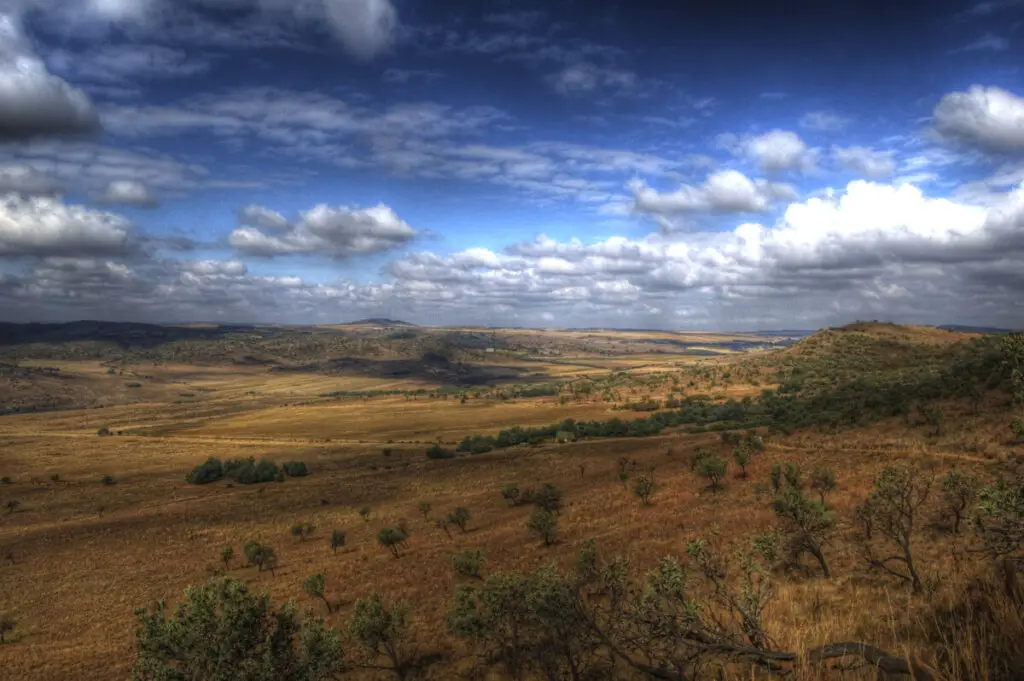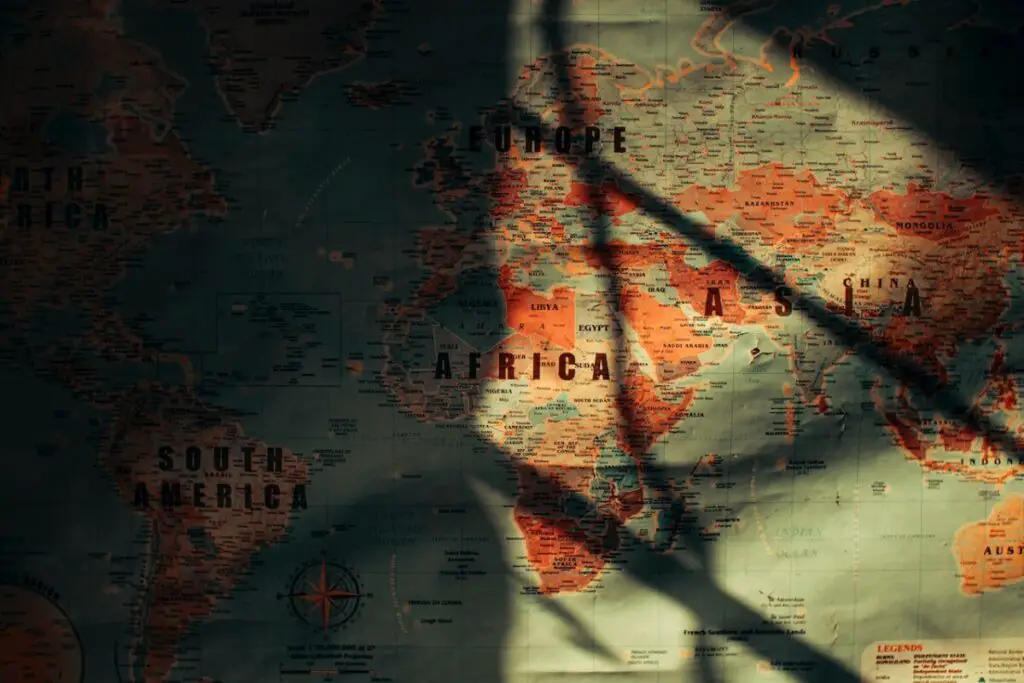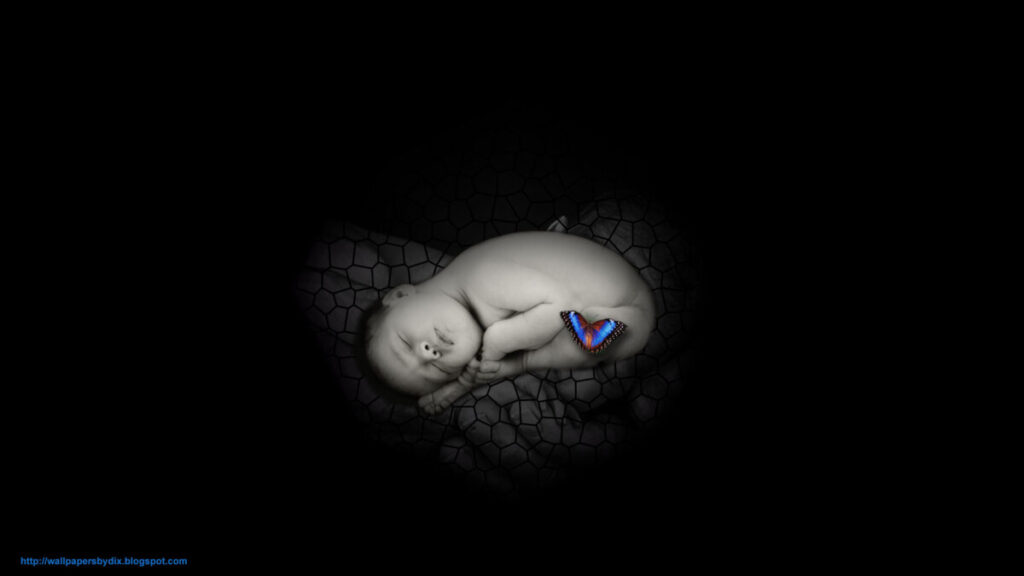The human race began about 6 million years ago in a small section of South Africa. The region is called Maropeng (also known as the Cradle of Humankind) and is located about 50km north of Johannesburg. Maropeng covers an area of about 470 square kilometres.
During the Pliocene period, Maropeng was warm and humid, and the dense vegetation supported an abundance of wildlife, and eventually, the beginning of human life.
But if Maropeng was so good for humans, why did they leave?
Early human migration out of Africa was caused by Climate change during the Pleistocene period. And because of climate change, humans in Maropeng suffered from:
- Drought
- Famine, and
- Attacks from other humans
The Migration happened because of Climate Change

We talk about Climate Change today as though it were a new phenomenon. Yet it has been affecting us for 6 million years.
Today, the Cradle of Humankind is moderate in temperature, with hot summers and chilly-but-comparatively-warm winters. Humidity in Maropeng averages about 54%, and the terrain is covered in dry, brittle grass during the dry season from April to September.
It wasn’t always like that. When early humans appeared, the region was warm and wet. The conditions were optimal for growth and flourishment, and the new species took full advantage.
During the evolution of humankind, the area was heavily vegetated, with parts of it covered in thick forest and others in dense grass and bodies of water.
How did Climate Change Cause Migration out of Africa?

The beautiful climate that early humans benefited from did not last. The Pleistocene period (2.5 million years—11,700 years ago) caused waves of change to Man’s birthplace and the world as a whole. This period is more commonly known as the Ice Age.
What was once humid and warm turned dry and cold. There were 4 main problems the change in climate caused:
- The water sources in the region dried up, which led to drought.
- Vegetation died, so there was little food for animals, and humans could not grow enough crops to keep themselves alive.
- Wildlife disappeared, moving elsewhere in search of food. So, there was no meat for humans.
- A lack of food and water led to attacks from starving people on others to steal what food they had.
So, the conditions that led to early human migration out of Africa were a direct result of Climate Change.
Threat of Starvation gave Early Humans no choice. They had to Move

During the Pleistocene period, dry and brittle grass grew in the Maropeng area. The nutrient-dense vegetation that humans and animals lived off disappeared. Just like humans, the animals in the region left in search of food and water.
Humans following the animals made sense as it meant migrating hominids could hunt for meat and would have food to survive. They would also be able to skin the animals and use their hides for warmth, which was vital in the chillier climate.
Bones of animals and early humans found in Maropeng are similar to bones found in Ethiopia.
Archaeologists in Ethiopia set up the Afar Triangle, which is a collection of sites in Ethiopia still being excavated today in 2023.
Animals living during the Pleistocene period include extinct ancestors of buffalo, elephants, giraffes, and more. Archaeologists’ findings indicate that people went north from Maropeng and travelled toward Ethiopia.
Depleted Resources Caused Human Conflict
Even though Maropeng is where humans originated from, it doesn’t mean they existed harmoniously. When food, water, and habitable land became scarce, people had to fight for survival.
Humans Are Naturally Curious
Though it is unlikely to be a reason for the migration out of Africa, curiosity could have caused some early humans to move. Humans migrated from Africa in waves, some earlier than others. Homo erectus migrated out of Maropeng as long ago as 3.5 million years, and the migration continued throughout the entire life of the species.
The remains of early human travellers have been found in:
- Australia
- Southeast Asia, and
- The Middle East
Fossils and bones were still being discovered by archaeologists today, but one discovery precedes them all: Lucy.
Unearthing Lucy
Lucy is a collection of 62 bone fragments which are estimated to be around 3.2 million years old. The fragments, which were discovered in 1974, are mostly ribs and vertebrae, but archaeologists also discovered her pelvis, a portion of her skull, and one portion of her jaw. Due to the age and structure of the remains, it was determined that Lucy belonged to the Homo erectus species.
She was found in Ethiopia, approximately 5,500km away from the Cradle. They named her Lucy because she was an adult female because her bones were fully formed, and her frame was small.
Lucy is from the same species of human as those in the Cradle. It’s unknown whether she was born in Ethiopia as the product of earlier migration or if she migrated to Ethiopia from Maropeng.
Lucy is the oldest collection of Homo erectus bones found as of 2023. The oldest collection of Homo sapien bones, known as the Herto Man, was also found in Ethiopia despite being millions of years younger than Lucy. The Herto Man is estimated to be about 160,000 years old. He was discovered in 1997 in the Afar Triangle, which is the same region of Ethiopia where Lucy was discovered.
Different Species of Humans Migrated, Too

Though Homo erectus were the first humans to migrate out of Africa, they weren’t the last. In fact, Homo sapiens did the same thing for much the same reasons as recently as 80,000 years ago. The only difference is that Homo sapiens did not always migrate out of Maropeng. There were other settlements in Ethiopia where migration out of Africa emanated.
The Pleistocene period lasted just under 2.5 million years and affected the whole of Africa. The evidence of flowstones found in Maropeng’s caves suggests water levels fluctuated several times, meaning the region experienced several warm-to-cool and humid-to-dry shifts that caused migration 3.5 million years prior to Homo sapiens.
We know they can only grow in caves during wet times, when there is more rain outside the cave. By dating the flowstones, we are picking out these times of increased rainfall. We think that during the times in between, the caves were open, the climate was drier and more like what we currently experience.
Dr Robyn Pickering – University of Melbourne:
The most recent migration of Homo sapiens (modern humans) was between 70,000—80,000 years ago. Archaeologists believe that Homo sapien migrants from Africa arrived in other parts of the world at different times, such as:
- The Middle East: 90,000—100,000 years ago
- Asia: 80,000—60,000 years ago
- Australia/Papa New Guinea: 45,000 years ago
Final Thoughts
How did humans come to be and early human migration out of Africa is complex, but it boils down to one overwhelming factor.
Early humans migrated because of the effects of climate change on their habitat.

